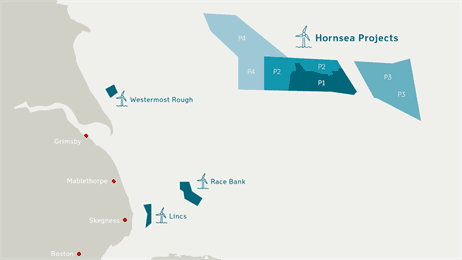Situated about 120km off the Yorkshire coast, Hornsea Three is set to be the world’s biggest offshore wind project when completed, with a maximum capacity of 2.4GW. The 696 square kilometre site lies to the east of Hornsea One and Two, which will also be built by Danish state-backed energy utility Dong.

"Hornsea Project Three is a huge infrastructure project which, if built out to full capacity, would be the world's largest offshore wind farm and potentially twice the size of Hornsea Project One,” said Brent Cheshire, DONG Energy UK's country chairman.
"Moving forward with consultation for Hornsea Project Three really underlines our commitment to the UK offshore wind industry. We have already invested around £5bn in the UK on offshore wind and we have a number of important future projects under construction and in our pipeline."
Dong Energy recently announced that it has taken a final investment decision to build the 1.2GW Hornsea Project One, which will be capable of powering over one million UK homes. Expected to be completed in 2020, it is set to become the world's largest offshore wind farm when it becomes operational, but will be surpassed by Project Three when it comes online later in the decade.
Hornsea Project One is one of three Dong Energy offshore wind farms granted a Final Investment Decision Enabling contract (Contract for Difference) by the UK Government in April 2014. It will consist of 7MW wind turbines, each more than 190m high. Dong has previously stated that the turbines will be built at a Siemens-owned factory in Hull.





Nanogenerator consumes CO2 to generate electricity
Whoopee, they've solved how to keep a light on but not a lot else.